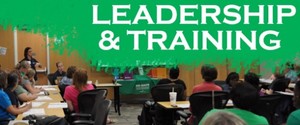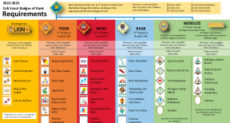 It’s fall and our newest recruits are joining us. Not just the boys, but the adults as well, stepping into Scouting leadership for the first time, moving to new positions within their units or making the transition from program to program.
It’s fall and our newest recruits are joining us. Not just the boys, but the adults as well, stepping into Scouting leadership for the first time, moving to new positions within their units or making the transition from program to program.
Any time we start something new, it helps to learn a bit about it before we take the plunge. In Scouting, we have plenty of training courses to help adult leaders get off on the right foot when it comes to performing their duties.
While most of Cub Scout leader training is available online without any need for human interaction (or putting on your uniform), there are still many opportunities to be trained in a collaborative setting by instructors whose knowledge spans the spectrum.
If you’re one of those people who have generously given your time to train others, I salute you! A job well done training new leaders can make the difference between them feeling overwhelmed and lost, or confident in their new abilities.
Fortunately, there are ways to add an upbeat attitude to our training courses. While we have a syllabus and course outline that we are expected to follow, there are many things you can try that can make a day spent at training more memorable. Leadership consultant Dan Rockwell recently wrote about several ways to defeat boredom and craft training courses that people will love.
- Avoid having participants sitting in classroom style. We’re training leaders – not running training courses. When I trained, I had participants sit at round tables so they could face each other. Each table was like a patrol or a den. it really helped when we had open discussions or the students worked on collaborative exercises.
- Walk around when you teach. I would sometimes stand behind a lectern, but most of the time I tried to get out and at least walk back and forth a bit. You could try going from table to table, intermingling among the students. Tom Peters, one of my favorite lecturers, doesn’t speak from the stage. He constantly walks throughout the audience, making eye contact with as many people as he can.
- Discuss real-life situations. Theory is boring. We have a lot to cover just following the course outline, but real learning takes place when students apply what they’re hearing to real-life experiences. Take frequent asides to bring the lessons to life. Ask “Who has encountered this? What did you do?” or invite suggestions as to how to implement something.
- Discuss lessons you learned from mistakes. Share a few success stories. Personal applications of the material you’re teaching speak loudly to someone trying to grasp the subject. Tell how you solved a problem, planned an activity or handled behavior issues.
- Protect the group from participants who monopolize the conversation. Everyone has taught or attended a class where one person asks all the questions or offers his observation on everything. As training leader, draw out questions or opinions from quieter people. Make note of students who look puzzled or maybe have ideas to share, and ask them to share their thoughts.
Like the rest of Scouting, training should be fun and exciting. Try to put some pizzazz into your next training session and watch how much your students relate and learn.
This post first appeared on Bobwhite Blather.




